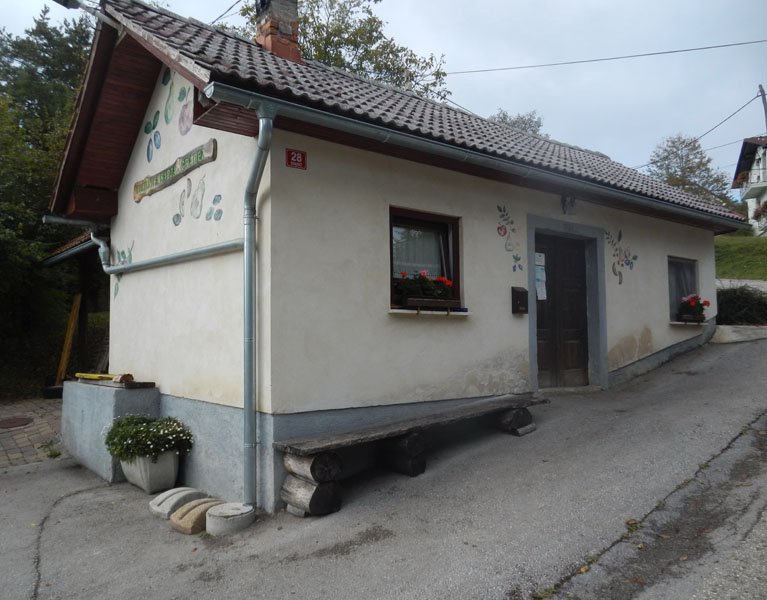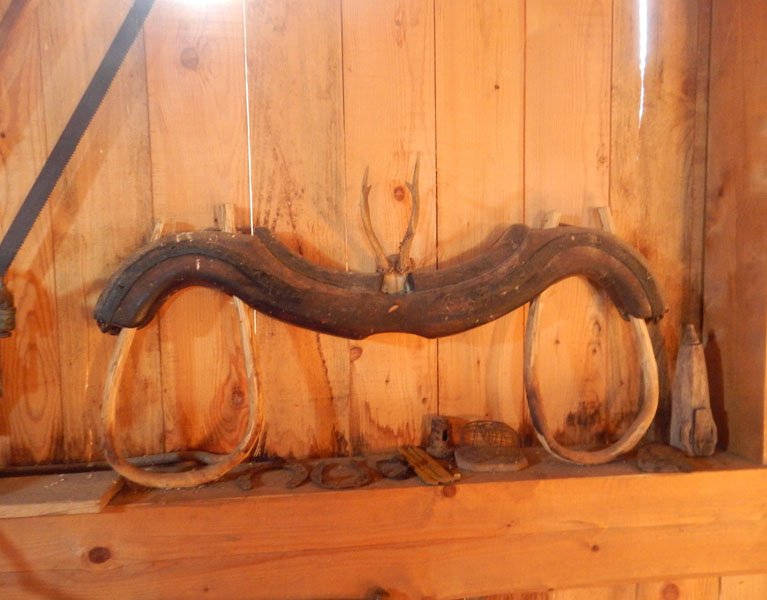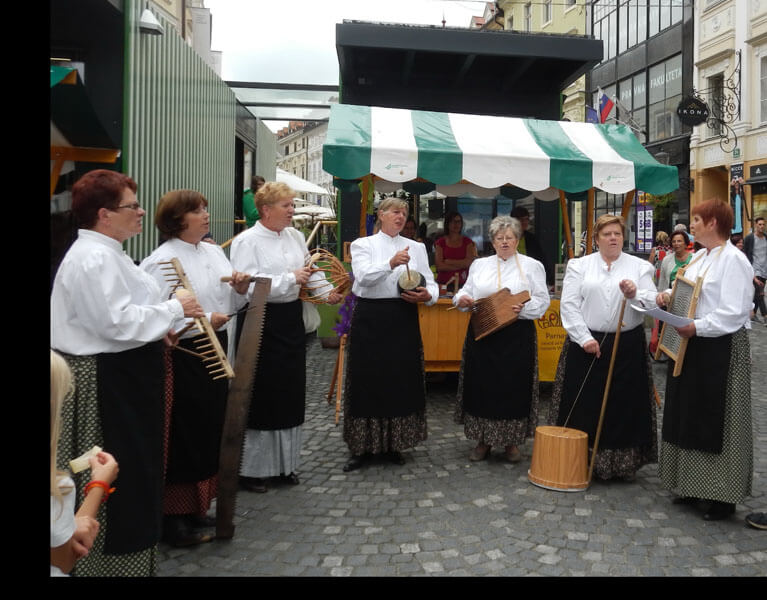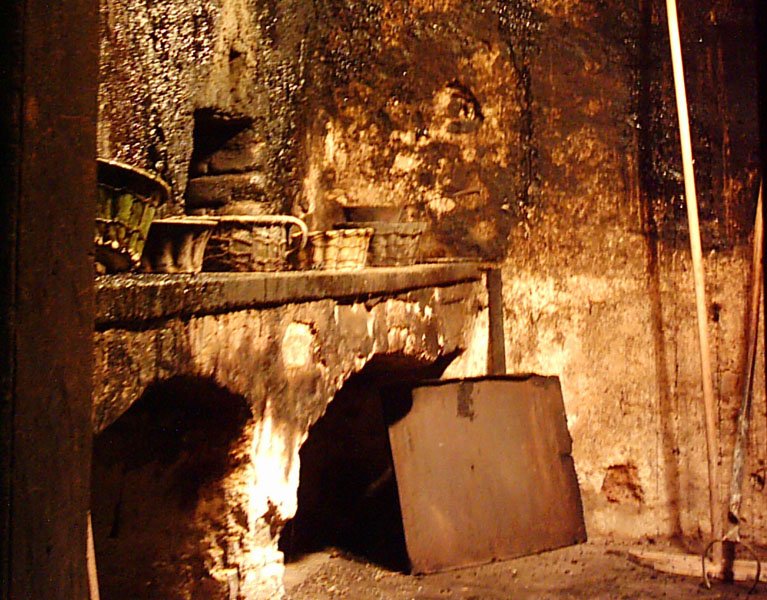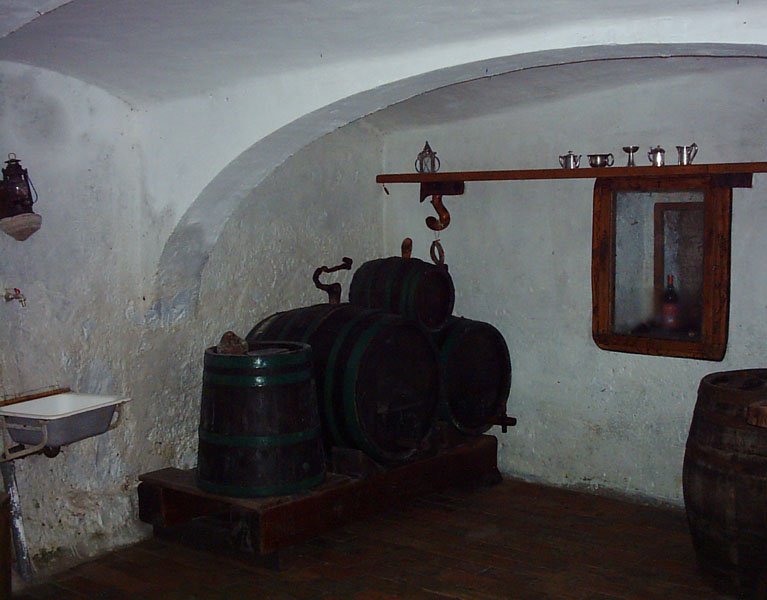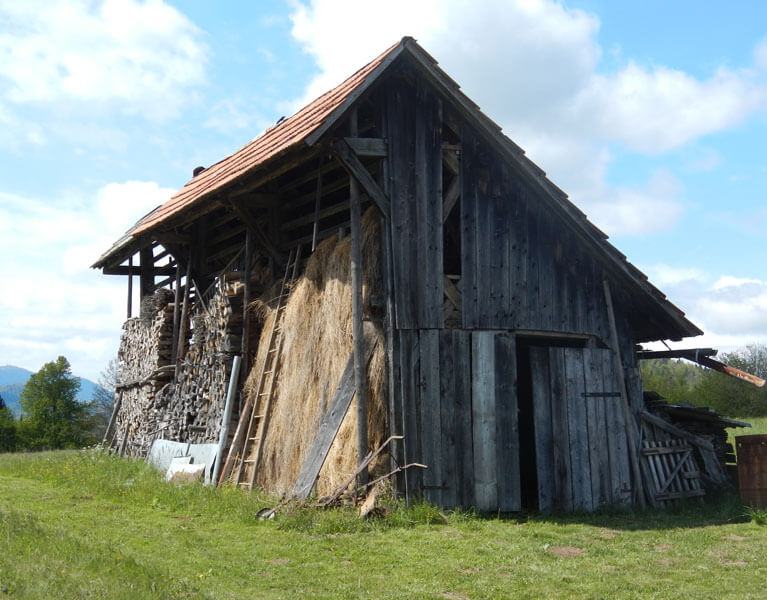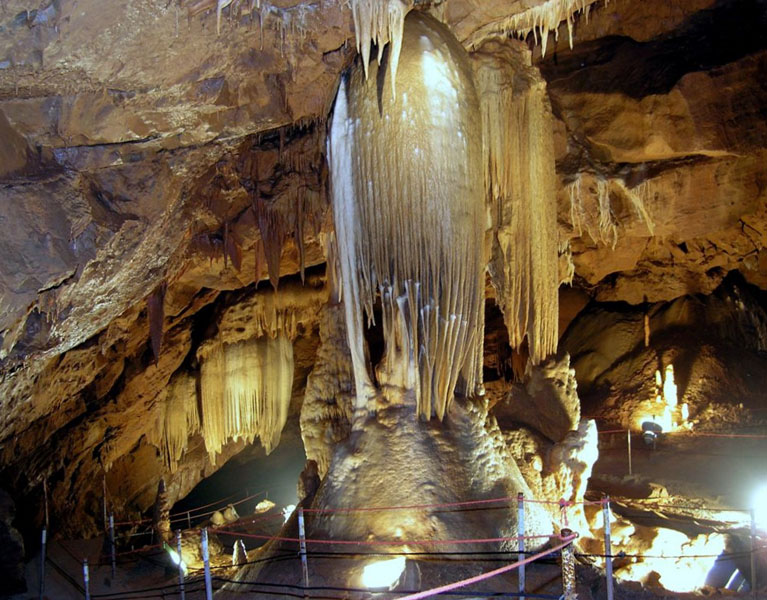On a hot Saturday, June 18, members of our association took part in a professional excursion to the land of hayracks in Šentrupert. The program was prepared by our member and former president Marko Šavli, who is from a nearby village.
We first visited the Uhan fruit farm in Rodine. We were able to admire the exemplary plantations of different varieties of fruit trees. They served us with morning coffee, brandy,,cherry wrap and fresh cherries. The housewife told us about the beginnings of family fruit growing. She also described the history of the nearby Lanšprež manor, which was owned by the Counts of Auersperg in the 18th century. There is also the last residence of the priest Peter Pavle Glavar, who was, in addition to Anton Janša, the most famous Slovenian beekeeper.
In Mirna Peč we visited the museum of two great people from Dolenjska - Tone Pavček and Lojze Slak. It is currently dedicated mainly to the world-famous accordionist, and an addition will be prepared next year about the poet, who also wrote lyrics for Slak. A rich collection of accordions, records, awards, photographs, original furniture from Slak's house and other material from his life is on display. The curator, his cousin Anica, told many interesting things from the life of the great musician, we also watched some excerpts from interviews with Slak and his friends. A few of our members and another visitor from the other group took courage on stage and were filmed in “Slak’s Studio” while they were singing his Beekeeper.
Under the "museum" impressions, we drove to the tourist farm Možina in Draga near Šentrupert, where they can boast of offering trout from their own fish farm. They prepared a delicious stew for us and a cold drink on a hot day.
In Šentrupert we were joined by a guide, ethnologist Špela. With it we first visited the baroque pilgrimage church of St. Francis Xavier on Vesela Gora (Happy Mountain), which was built in 1735 on the site of the crumbling church of St. Marjete. The church is designed in an octagonal ground plan of the central part, it has four richly painted domes. For the needs of pilgrims and priests, a pilgrimage house was built not far away in 1768, which was owned by the Barbo noble family in the first half of the 19th century. It is now being renovated, with a wine cellar, a large hall and a collection of old farm tools being planned.
In Šentrupert stands the Gothic church of St. Rupert from the second half of the 15th century. There are no satisfactory data on its origin and development. In the first church, which was supposedly built in the 11th century by Princess Emma, in 1163 the Patriarch of Aquileia Ulrich II. Trebanjski convened gathering of priests, as it was the seat of one of the largest parishes in Slovenia at the time. The building consists of a 60-meter bell tower, a shrine and a nave. In terms of floor plan, the bell tower is a square that turns into an octagon on the third floor, with a mighty conical roof decorated with smaller towers. The peculiarity in it is preserved called God's house for storing communions, as there is supposed to only another one in Slovenia.
Our next stop was the central part of the excursion, this is the land of hayracks. The exhibition, which is the first open-air hayrack museum in the world, was opened in 2013. There are 17 hayracks and two drying devices on display in the landscaped areas. Many of the exhibits originate from the Mirna Valley, each with a board with information about the type, ownership, time of creation, carpenter, previous location and dimensions. We learned all about the structure of hayracks in Slovenia, there are three types of single and three types of double hayrack called "topler". The guide also described their use, which of course is not unknown to us - visitors from the village. The architect Niko Kralj was a big admirer of hayracks. During the fieldwork, he documented and studied them for his doctoral dissertation, which he unfortunately failed to complete. He left extensive documentary material, which is preserved in the Novo mesto museum.
We then drove to the highest peak in the municipality of Šentrupert - Nebesa (602 m), from where the "heavenly" view of the Mirna Valley extends, our Ahac and even Snežnik.
We had a delicious late lunch in the oldest inn in Šentrupert - near Jaklič. Before leaving home, we stopped by Anton Zakrajšek in nearby Migolice, who knits willow and straw products from childhood. He had a variety of baskets and braided bottles on offer, and we could also buy honey.
It is more in Trobla.
{gallery}ekskurzija-kozolci{/gallery}
 ENG
ENG  SLO
SLO 



